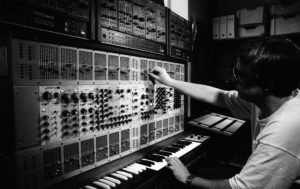Review of "The Northwest Passage" by Ly Luan in HOUZ-MOTIK MAGAZINE
Sailing into the unknown: Christian Wittman and the ghosts of the Northwest Passage
By mapping the void, modern Europe convinced itself that a maritime corridor lay dormant somewhere beneath the Arctic ice. The Northwest Passage was born of a geographical assumption that became a political obsession. Behind the legend were figures embarking on a journey that did not yet exist, and often toward their own demise. a chronicle of a record that scrutinizes the margins of the world rather than its myth.
Christian Wittman explores the myth of the Northwest Passage without heroism or folklore. In The Northwest Passage, he sculpts a soundscape of drones, creaks, and mists, where the Arctic becomes less a setting than a space of uncertainty. This is not an expedition narrative, but rather an inner drift, attentive to silences and discreet phenomena. The ambient album questions what remains when bodies disappear, transforming ice into something to be listened to rather than a spectacular image...
A tribute stripped of heroism
What strikes us immediately is the restraint. Wittman does not dramatize anything; he stretches out the space, lets the air circulate, and creates an unstable horizon where landmarks dissolve. The historical explorers, those who, from Hudson to Franklin, attempted to open a route between the Atlantic and the Pacific, never appear explicitly. The album simply inhabits their absence. We perceive fragments, auditory silhouettes, movements of dark masses; never heroic gestures, nothing commemorative. The tribute is conveyed through the material, not through narration.
Textures: coldness as architecture. The compositions are based on meticulous layering, subterranean drones, rustling sounds worked like sediments, abrasive layers that crack and then fall silent. Here, the sea is anything but flat. It breathes, swells, recedes; it acts as a discreet engine that supports each sequence. The creaking of icebergs seems to emerge from an intermediate space—neither documentary nor fictional—and it is this ambiguity that gives the record its density. The result clearly evokes a work of synthesis and sound design that seeks to reproduce physical phenomena rather than illustrate a polar postcard.
“It is not the Arctic that is inhospitable, but our ignorance of how to live in it.” – Vilhjalmur Stefansson (The Friendly Arctic (1921)
Inner journey vs. icy odyssey
The real movement of the album lies in its breathing. The pieces open like corridors of mist, tighten, fragment, then let the diffuse light back in. This is not a chronological narrative. We drift along, as if each track were questioning a state, a wait, a disorientation, an asceticism, without ever seeking resolution. The cold acts here as a functional metaphor: it strips away, reduces gestures, slows down thought. We find ourselves listening to the silences more than the sounds, as if the material were deliberately disappearing to allow vertigo to emerge.
The Arctic, not as a setting but as an interval. The last third of the album is the most compelling: Wittman achieves a sobriety reminiscent of certain minimalist works where a single movement is enough to maintain tension. The Arctic is not treated as a sublime spectacle, but as a zone of indeterminacy. It brings to mind the lines of old maps, the hesitant tracings, the errors of judgment that made the world seem bigger than it was. Far from the routes that were once sought to be forced through the ice floes, this album reminds us that there are still passages that can only be opened by paying attention. Here, the crossing is not geographical: it takes place in the fragile interval between what resonates and what fades away.










